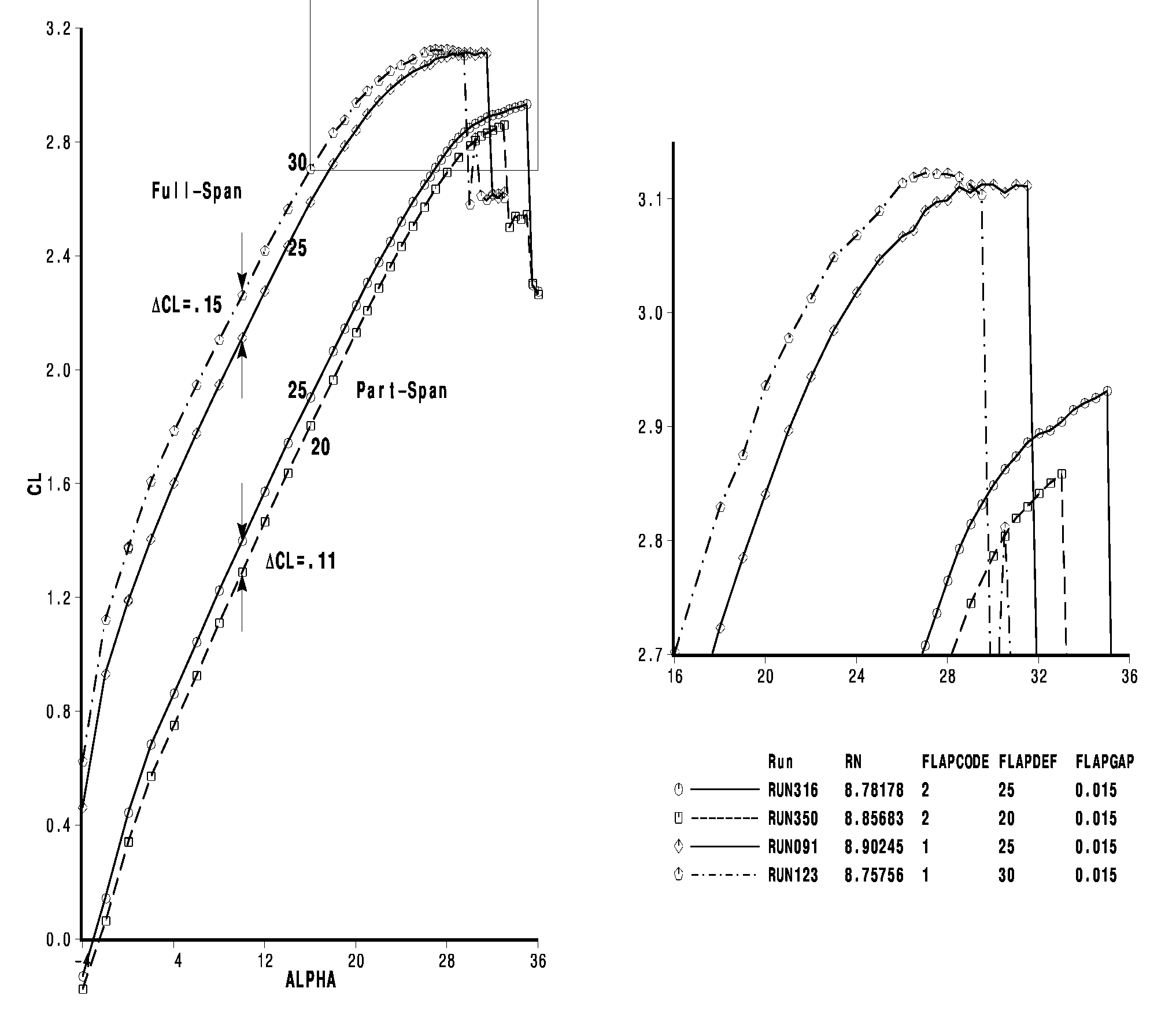
CFD Challenge – Flap Effectiveness
For the high lift designer, the ability to accurately predict increments in lift due to changes in flap deflection is vital. Configuration decisions (e.g. the choice of double-slotted vs. single-slotted flaps) rely on an accurate assessment of flap effectiveness. In the past, the high lift designer has relied on wind tunnel and flight test results to evaluate proposed configurations. A CFD code whose absolute levels of lift and drag are in error is still highly useful if its predicted increments are accurate.
Sensitivity to flap deflection for the full-span and part-span landing
configurations is shown in Figure 19 for the intermediate Reynolds number
Rec=8.8x106. Of interest are the increments in CL
at fixed alpha (here, a=10deg), and in CLmax.
For the full-span configuration, increasing flap deflection from 25 to
30 degrees results in DCL|a=10=0.15,
while DCLmax »
0.02. For the part-span configuration, an increase in flap angle from 20
to 25 degrees produces DCL|a=10=0.11,
while DCLmax »
0.07.

Lift changes due to flap deflection for full-span and part-span landing flaps configuration.
return to Data Archive home page
Page Curator and NASA Official Responsible for Content
Judith A. Hannon
Last Updated
August 5, 2011